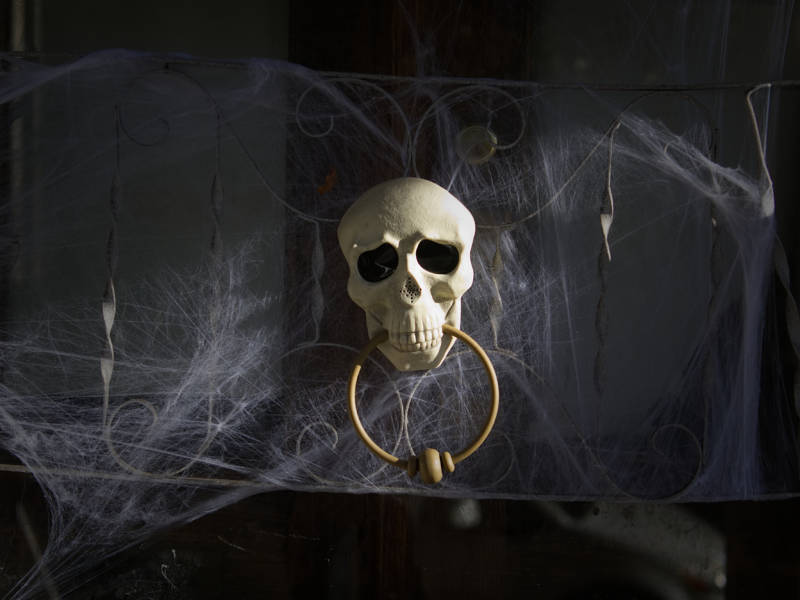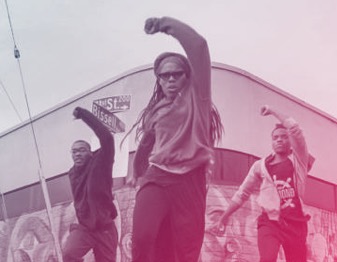We have a joke here at Code Switch that Halloween is like blackface Christmas. And every year, there’s at least one headline with the story of one very tasteless costume. These scandals cycle back around again and again and again.
When it comes to this topic, we’ve been there before—with a whole podcast episode about it. As our very own Gene Demby put it, in response to the infamous Megyn Kelly statement that she didn’t understand why blackface on Halloween is a problem: “Maybe these annual conversations should be less about whether blackface is bad, but why so many of us have so much historical illiteracy about its badness.”
Sure, no one ever *really* intends to offend others with their rendition of a famous black character or icon (do they?), but intent shouldn’t be at the forefront of our examination (nor should it take precedent in the apology that follows).
Moving on from shoe polish, here are some more costume ideas that fit into our do’s and don’ts.
First, under the do’s:
Go for one of the classics: pirate, astronaut, ghost, cheerleader. You know the drill. Or spice it up with some pop culture creativity: Harness physiological terror by dressing up as a Tethered from Us, an alien at Area 51 or, if you’re looking for a group costume, 30 to 50 feral hogs.
Now for some don’ts:
Let’s start with the obvious. Stay away from the sexy Indian fringe-and-headdresses idea (there’s nothing erotic about genocide!). Geisha wear (yes, this includes kimonos) and transphobic ensembles are also off-limits. Anything that makes a spectacle out of a culture or ethnicity is to be avoided.
But what if there hasn’t been a media storm condemning a certain costume and you still sense something is off? Like when a reader wrote to us about her child wanting to dress as a voodoo doll. “I don’t know enough about Louisiana culture or African religious traditions to know whether this would hurt or offend someone,” she said.
Her instinct that something felt off? Right on the mark. NPR‘s Leah Donnella scouted out the origins of “voodoo” and its use as a catchall for many religions. The best known of those is Haitian Vodou, which is vastly misunderstood by Americans and is not to be confused with what you see in movies like Indiana Jones or The Princess and the Frog. The conclusion, as our story put it, is that “when it comes to Halloween, treat Vodou like you would any other faith. That is to say, don’t delve into anyone else’s religious traditions (real or dreamed up by Hollywood) in search of a costume.”
All in all, you should trust your suspicions. If you have to ask yourself whether your costume is offensive, it likely is. And you don’t want to be the only one in on the joke.
Great. So your language is in check. Your costume is in check. You’re on track to become the best on the block. Now let’s talk decorations.
There are endless ways to funk up your displays: jack-o’-lanterns, broomsticks and cobwebs. But then there are optics that send a much more sinister message. In 2018 we answered a question from a listener who asked about hanging skeletons by a noose outside his home. Was this, he wanted to know, reminiscent of a lynching?
Well, yeah. Images carry meaning that far surpass what may appear to be true at face value. It’s our responsibility to seek that understanding even when—and especially if—our identities have shielded us from those legacies of horror. The era of lynching in America began after Reconstruction, and between 1877 and 1950, over 4,000 African Americans were murdered in racial lynchings, often becoming public spectacles for white community residents. (Our podcast episode “A Strange and Bitter Crop” explores the horror of the Claude Neal lynching of 1934.)
Don’t worry—you can still make use of your skeletons. NPR’s Mayowa Aina suggests sitting the skeleton up in a tree so it looks like someone died and decomposed or even using spiderwebs instead of rope. Decorations are fun because you can use your imagination, so get creative and avoid invoking historical trauma.
So this year and always, be mindful of your mischief. Entertainment this All Hallows’ Eve doesn’t have to come at a cost to anyone, and avoiding missteps doesn’t take much extra effort.

9(MDAxOTAwOTE4MDEyMTkxMDAzNjczZDljZA004))

